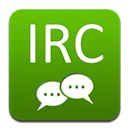
Duration 3h 1m MP4
![]()
Title: FXPHD – HOU233 – Rendering Fire and Smoke Simulations in Houdini
Info:
This course, from VFX artist Liam Whitehouse, covers how to render detailed fire and smoke simulations which have been generated using Axiom for Houdini.
This course looks in detail at how to make creative adjustments to high resolution Axiom pyro simulations, including how to adjust the transparency and shadowing of smoke and the lighting scattering from fire elements. You will learn how to create and adjust pyro fire and smoke materials in Solaris and Karma to match reference imagery and how to add lighting to the scene to match the look and feel of background plates using HDRI or the Karma Sky Atmosphere lighting system.
In addition, the course covers how to setup AOV’s, cryptomattes, and deep render outputs that are ready for the compositing team.
Class 1: Animation in simulations
How to create custom animation for high resolution simulations for specific shots. In many shots animation will play a part in pyro simulations so you will learn how to get an effect from fx review notes into a simulation by key framing the settings to create our desired outcome and simulate it. Also covered is how to use pyro influence fields to push or pull simulations with Axiom on specific keyframes.
Class 2: Pyro Bake Volume
How to setup and adjust the Pyro Bake Volume which has a myriad of settings to adjust the look and appearance of both the smoke, fire, and scattering of light through our pyro element. First, you will learn how to adjust the smoke colour, opacity and shadow density of the volumetric smoke elements and then add scattering through the volume from our fire simulation using the scatter settings. You will see how to match reference imagery so that the scale and intensity of our scattering blends realistically between our fire and our dark smoke as the temperature cools down. These settings will carry across into our Karma Pyro materials at render time.
Class 3: Karma Pyro Shader
How to setup the Karma Pyro Shader VOP node materials and match them to reference imagery. We will setup our smoke colour and transparency and adjust our shadow density to give the correct look which is similar to the reference. Next, we add scattering and dial it in to give the feeling of heat and illumination scattering inside our smoke volume. Also, a look at the fire shader and the advantages of having fire and smoke separately rendered and simulated.
Class 4: Lighting
How to setup different lighting scenarios for different times of day and different environments. The class covers how to setup night, dusk, midday cloudy, midday sunny, and sunset lighting setups using different HDRI scenes that give us a different feel and colours on our asset and pyro simulation. We will also learn how to use area lights and the Karma Skylight system for interior lighting or fx review turntables. Finally, you will learn how to adjust the intensity of lights and mix and blend them together to create realistic direct and indirect values.
Class 5: Render setup
How to setup AOV’s, Cryptomattes and deep image render passes for our pyro and geometry so that the comp team can has maximum flexibility to adjust the renders in Nuke. Also covered are batch render settings, resolution and samples, and denoising to get sharp, noise-free renders of our pyro scene for fx review and compositing.
![]()
![]()
https://rg.to/folder/7904373/FXPHD%20HOU233%20Rendering%20Fire%20and%20Smoke%20Simulations%20in%20Houdini%20L.html
![]()
http://alfafile.net/folder/Gix5
![]()
https://nitroflare.com/view/B3A0F86D8FD8AB4/FXPHDHOU233RenderingFireandSmokeSimulationsinHoudini.part1.rar https://nitroflare.com/view/8766F911B6F813B/FXPHDHOU233RenderingFireandSmokeSimulationsinHoudini.part2.rar https://nitroflare.com/view/0F22F251E8E4D96/FXPHDHOU233RenderingFireandSmokeSimulationsinHoudini.part3.rar https://nitroflare.com/view/825B7EC9871EC59/FXPHDHOU233RenderingFireandSmokeSimulationsinHoudini.part4.rar





HI Can you please
HOU280: Impact Based Fluid Effects